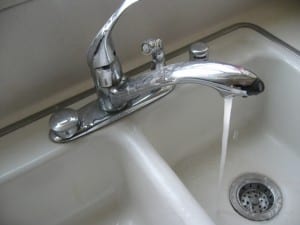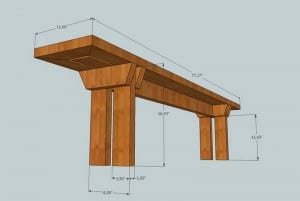Last Updated on November 5, 2025 by teamobn
Building a compact house starts with a clear plan. You need a realistic budget and a simple timeline. Learn the codes that decide what you can build. Set your utility strategy early to avoid rework. This guide covers tools, materials, and steps for first‑time builders of tiny homes.
Contents
Why Tiny Homes
Tiny homes are compact dwellings designed to deliver a full living experience in a small footprint. Most fall under 400 square feet, with smart layouts that fit a kitchen, bathroom, sleeping space, and storage. You’ll see two main types. Tiny houses on wheels that move like RVs.
And foundation‑built versions that live like cottages or accessory dwelling units. Builders use timber frames, SIPs, steel, or even converted containers. The goal is the same. Make every inch work hard.

What counts as a tiny home depends on intent and design. Some serve as primary residences. Others work as guest suites, studios, or rental units. Many lean on built‑ins and multi‑use furniture. Stairs with drawers. Tables that fold. Lofts that sleep two. Off‑grid options are common. Solar, propane, rainwater, and composting toilets keep costs in check and life flexible.
- Lower total cost to build and maintain
- Smaller utility bills and easier energy independence
- Less debt and faster path to financial breathing room
- Quicker build timelines and fewer materials to source
- Reduced environmental footprint and waste
- Easier upkeep with fewer surfaces to clean and repair
- Mobility if you choose a THOW for travel or seasonal work
- Strong use of space with built‑ins and convertible furniture
- Freedom to live closer to nature or near city jobs on modest lots
- Great ADU potential for family, guests, or rental income
- Simpler, clutter‑light lifestyle that supports focus and calm
- Design control for accessibility, aging in place, or pet‑friendly layouts
Tiny Home Styles That Fit Real Life
Tiny homes come in many shapes and build methods. Explore five proven types so you can match your budget, skill level, and lifestyle.
Tiny House on Wheels (THOW)
A THOW gives you mobility without giving up comfort. Build on a purpose‑built trailer and plan your weight early. Smart layouts fit a real kitchen, bathroom, and sleeping loft. You can boondock with solar and propane or plug into park hookups.
Parking rules vary, so research before you buy land. Towing requires the right vehicle and brakes. It’s a flexible choice if you want travel and seasonal living.
Foundation‑Built Tiny Cottage
This tiny home lives like a classic cottage. You get a permanent address, standard utilities, and easier insurance. Many owners use it as an ADU for family or rental income. The structure sits on piers or a slab for long service life.
Insulation and air sealing are simpler than on a trailer. Zoning and setbacks drive design choices. It’s ideal if you want roots and predictable daily living.
Prefab Tiny Home
Prefab homes arrive as factory‑built modules or flat‑packs. You gain speed, consistent quality, and a clear price. Builders cut waste and control moisture under roof during assembly.
On-site work focuses on foundation, utility hookups, and finishes. Transport and crane days are planned, which keeps timelines tight. Warranties add peace of mind. It’s a strong path if you want a faster move‑in and fewer unknowns.

Container Tiny Home
A container tiny home starts with a rugged steel shell. The frame is fast to place and naturally secure. Success depends on insulation and condensation control, inside or outside the steel. Window and door cutouts may need reinforcement.
Coastal sites demand rust protection. Layouts favor linear kitchens and baths that hug the walls. It’s compelling if you value durability, modern lines, and a quick weatherproof start.
A‑Frame Micro Cabin
An A‑frame delivers character and simple structure. The steep roof sheds rain and snow, which protects the shell. Lofted sleeping areas fit well under the ridge, while large glass walls bring in light and provide views. Therefore, plan for shading and heat control.
Storage lives in built‑ins and low dressers. Kits make the build approachable for weekend crews. It’s a great choice for retreats, rentals, or creative work spaces.
Seasonal Care
Seasonal care keeps your tiny home efficient, dry, and safe. Use this checklist to prepare for weather shifts, cut utility costs, and prevent surprise repairs.
Spring Reset
Do a top‑down inspection. Clean roofs and clear gutters on foundation, prefab, and A‑frame shells. Reseal penetrations and window flashings on all builds. For container tiny homes, spot rust, treat, and repaint.
For THOWs, service brakes, check bearings, torque lug nuts, and test trailer lights. Flush water tanks, sanitize lines, and swap ERV or exhaust filters. Verify GFCIs and test smoke and CO alarms. Update photos and inventories for insurance.
Summer Heat and Sun
Control heat gain early. Wash and shade big A‑frame glazing with exterior screens. Add reflective film or insulated blinds if needed. Service mini‑splits and clean coils. For containers, inspect exterior insulation and consider a cool roof coating.
THOWs should check tire pressures before travel and shade the trailer frame to protect wiring. Foundation and prefab homes need deck, sealant, and UV checks. Ventilate kitchens and baths to limit humidity spikes.
Fall Storm and Wind Prep
Get rain‑ready. Clear downspouts and confirm positive grading around foundation and prefab homes. Trim branches that threaten A‑frame ridges and skylights. Tighten container anchor bolts and inspect welds.
THOWs should add skirting vents, inspect tie‑downs, and test brake controllers. Replace worn weatherstripping on doors and hatches. Test backup power, charge batteries, and store extra filters. Restock roof patch kits, tarps, and fasteners for quick fixes after a storm.
Winter Freeze and Moisture Control
Protect water and structure. Insulate exposed PEX and add heat tape on vulnerable runs. THOWs benefit from insulated skirting and a heated wet bay. For containers, break thermal bridges with foam at sills and corners, then monitor for condensation.
A‑frames need roof‑rake routines, ice‑dam checks, and clear soffit vents. Service heaters, test CO alarms, and keep propane or fuel safely stored. Run a dehumidifier or ERV to prevent window frost and mold.
Year‑Round Quick Wins
Set quarterly reminders. Clean filters, test alarms, and check fire extinguishers. Recaulk small gaps before they grow. Keep spare fuses, PEX fittings, and hose gaskets on hand. Log weights after upgrades on THOWs. Keep manuals, serial numbers, and warranty info in one binder or a cloud folder so service calls stay fast and stress‑free.
Off‑Grid Options
Off‑grid systems let you live comfortably without hookups. Plan power, water, and waste as one ecosystem for reliability and cost control. This approach works for tiny homes that travel or sit on remote land.
Power
Start with right‑sized solar, a LiFePO4 battery bank, and an inverter‑charger. Add a quiet generator for storms and a shore‑power inlet for parks. Keep loads low with LED lighting, induction when the bank allows, and Energy Star appliances. Set a battery monitor and low‑voltage cutoffs to protect storage. Thoughtful design keeps tiny homes running through cloudy weeks.
Water
Harvest rain where legal using metal roofing, leaf guards, and a first‑flush diverter. Store in food‑grade tanks with a pump, pressure tank, and sediment, carbon, then UV filtration. Insulate lines and add heat tape for freeze zones. For wells, choose efficient pumps and a small solar‑ready controller. Label valves and keep spare hose gaskets in a dry kit.
Waste
Choose a sealed composting or urine‑diverting toilet for low water use. Incinerating units fit cold climates but need strong ventilation and extra power. For blackwater, mobile setups rely on holding tanks while foundation homes use permitted septic. Filter greywater through a mulch basin where allowed. Quiet, odor‑managed systems suit tiny homes and winter living.
Heating and Cooling
Insulate well, air‑seal, and ventilate with an ERV. A compact heat‑pump mini‑split sips power and handles humidity. Use a direct‑vent propane heater only with detectors and regular leak checks. Small wood stoves need clearances, a proper hearth, and dry fuel. Add shade, awnings, and exterior blinds to cut summer gains.

Cooking and Hot Water
Pick propane for simple cooking or induction when your battery bank can carry peaks. For hot water, use a high‑efficiency tankless propane unit or a compact heat‑pump water heater on foundations. Keep lines short to reduce wait times. Insulate tanks and recirculation loops in cold zones. Store backup canisters safely with good ventilation.
Monitoring and Safety
Install CO, smoke, and propane detectors on every build. Add tank level sensors, a shunt‑based battery monitor, and remote alerts for temperature and leaks. Protect circuits with correct wire sizing, fusing, and GFCI/AFCI devices. Use a transfer switch for generator inputs to prevent backfeed. Keep fire extinguishers reachable and dated.
Starter Setups by Home Type
THOWs favor rooftop solar, a 24–48V battery bank, and quick‑disconnect water and waste. Foundation tiny cottages can scale arrays, add cisterns, and run heat‑pump water heaters.
Prefab units benefit from factory‑prewired solar chases and pre‑plumbed manifolds. Container homes need exterior insulation, cool roofs, and vapor‑aware detailing. A‑frame cabins thrive with shaded glass, roof snow control, and a small mini‑split.
Conclusion
Tiny homes cut building and living costs while freeing cash for what matters. Smaller footprints mean lower energy use, easier maintenance, and faster repairs. Smart layouts and built‑ins maximize comfort without clutter, supporting focus and calmer daily routines. Mobility or modest footprints expand your choices, ADUs, rentals, retreats, or seasonal living. If you want flexibility, financial breathing room, and a lighter impact, tiny homes deliver.






